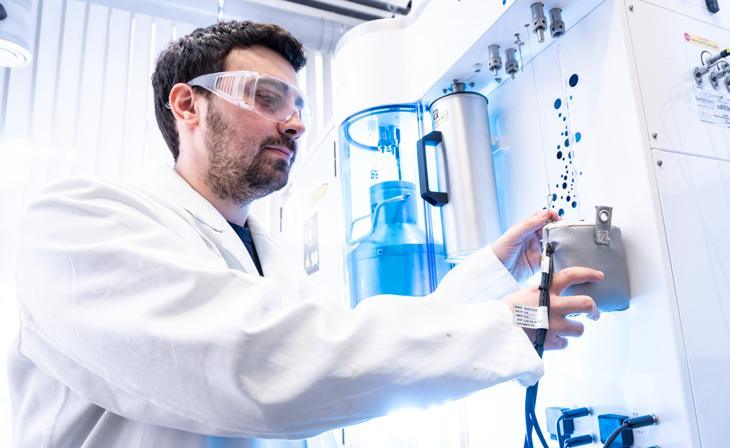H2 - the energy carrier of tomorrow
Hydrogen is one of the energy carriers of the future. Storing the gas under simple conditions is not easy, but it is an essential requirement for hydrogen drivetrains that are green and necessary for a more climate-friendly environment. That is why the University of Leoben is devoting tireless research effort into the development of materials for storing hydrogen. The current focus is on activated carbon powder. The carbon presents the largest possible surface area, on which hydrogen atoms can adhere and be absorbed.
Raw material from spent coffee grinds, tea leaves and orange peel
The activated carbon powder is made from organic waste products, especially from commercial coffee production. The powder can absorb the gas but only becomes an effective carrier substance after it has been activated, i.e. made receptive to the hydrogen molecules. This is achieved by selectively doping the carbon powder with specific elements, such as platinum. The additives are combined with the activated carbon either using a nanoparticle separator system or a plasma modification system.
Storage at ambient temperatures
Currently, it is necessary to cool the hydrogen storage tank to minus 160oC using nitrogen. However, as such storage may become problematic, it is expected to be initially used in trucks and, in particular, marine engines. Nevertheless, using a 150 kilogram tank in a car, it is already possible to achieve a range of some 500 kilometres–albeit with freeze cooling. By comparison, the range is a mere 100 kilometres at ambient (room) temperature. Nevertheless, the future prospects look good. Within the last three years, storage capacity at ambient temperatures has been increased some tenfold.









